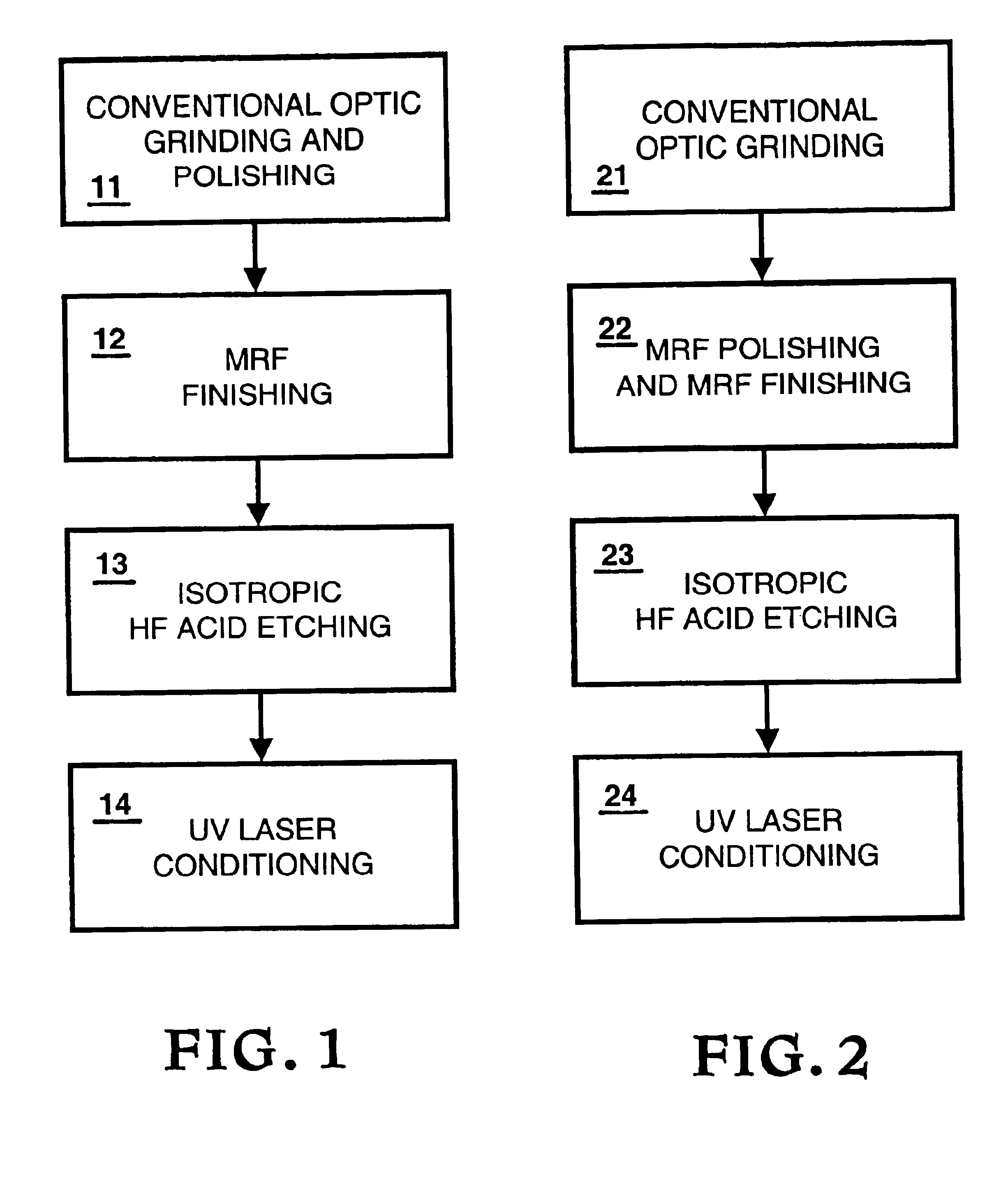Combined advanced finishing and UV laser conditioning process for producing damage resistant optics
a technology of advanced finishing and laser conditioning, applied in the field of optics, can solve the problems of catastrophic damage to the optics, application of this type of remedy, and inability to reduce the initiation of damage sites or mitigating the growth of existing damage sites, so as to reduce damage, reduce damage, and reduce damage. the effect of catastrophic defects
- Summary
- Abstract
- Description
- Claims
- Application Information
AI Technical Summary
Benefits of technology
Problems solved by technology
Method used
Image
Examples
Embodiment Construction
[0025]Referring now to the drawings, to the following detailed information, and to incorporated materials; a detailed description of the invention, including specific embodiments, are described. The description of the specific embodiments, together with the general description of the invention, serve to explain the principles of the invention.
[0026]This invention relates to methods for reducing the initiation of laser-induced damage on the surface of fused silica optics in environments where they are exposed to high-power ultraviolet light having a wavelength of about 360 nm or less, e.g. a YAG third harmonic (355 nm, oftentimes referred to as 3ω) laser beam, an excimer laser beam, or some other high-power ultraviolet laser beam such as that intended for the National Ignition Facility. More specifically, the invention relates to methods for reducing the initiation of surface damage sites that lead to catastrophic failure of the fused silica optics. Further, the invention relates to ...
PUM
| Property | Measurement | Unit |
|---|---|---|
| wavelength | aaaaa | aaaaa |
| wavelength | aaaaa | aaaaa |
| ultraviolet wavelength | aaaaa | aaaaa |
Abstract
Description
Claims
Application Information
 Login to View More
Login to View More - R&D
- Intellectual Property
- Life Sciences
- Materials
- Tech Scout
- Unparalleled Data Quality
- Higher Quality Content
- 60% Fewer Hallucinations
Browse by: Latest US Patents, China's latest patents, Technical Efficacy Thesaurus, Application Domain, Technology Topic, Popular Technical Reports.
© 2025 PatSnap. All rights reserved.Legal|Privacy policy|Modern Slavery Act Transparency Statement|Sitemap|About US| Contact US: help@patsnap.com

